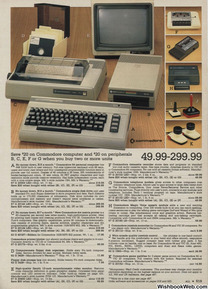Good news, out of the pile, there were at least two usable terminal programs for C64 with 80 column support, thus matching standard printer resolution (was 80 columns, too).
It's Term 80 and X-Term. The latter is by Markt&Technik, no surprise.
(ANSI Term had experimental 80 column support, not sure if it made it into regular version.)
(Edit: Please note that a monochrome monitor was needed to make out 80 columns on screen.
A colour monitor was too fuzzy, unless it had a monochrome mode or a separate chroma/luma input (say, C1701/C1702 monitors).
Unfortunately, the C64 has dirty luma output thanks to the bad RF unit and the noisy VIC II.
That's why I had to open my C64 and cut the chroma line in the RF unit. Now it's a little bit better on the green monitor. Colour can still be gotten by using a chroma/luma video cable.)
The rest seems to be stuck in in 40 column operations.
Though I'm not sure if they have a "virtual screen" or not.
That's what the terminal program on my dad's Sharp MZ-80K had back in late 70s/early 80s.
Because of the screen being merely 40 columns wide, which wasn't enough for professional work, the terminal program had implemented some sort of screen scrolling.
There were "another" 40 columns on the right, so to say. Like in a simple typewriter program. Or maybe it were 120 columns in total (a letter's length) ?
Anyway, the same code was used to get CP/M running on that system.
The Sharp wasn't spectacular, but thanks to the Z80 and the clean memory
(no BASIC in RAM, full RAM available to CP/M) it could run programs like MBASIC and Turbo Pascal.
Essentially like a Commodore 128 could, in CP/M mode.
The Sharp merely required a floppy interface and a modified BIOS (CP/M component).
That's why I think that Commodore really missed an opportunity here.
If it had installed a NEC V20 instead of an Z80, it wouldn't have had been so outdated and could have had booten DOS.
By about 1984, the CP/M platform was becoming a legacy platform. A big one, but with declining importance and user base.
If the Commodore had a NEC V20, it could have had also been able to run a few pure CP/M programs not requiring Z80 instructions (8-Bit Turbo Pascal was out, though).
Optionally, the Basic V7 could also have been turned into a DOS program or a booter application then.
"Time, it seems, doesn't flow. For some it's fast, for some it's slow.
In what to one race is no time at all, another race can rise and fall..." - The Minstrel
//My video channel//
